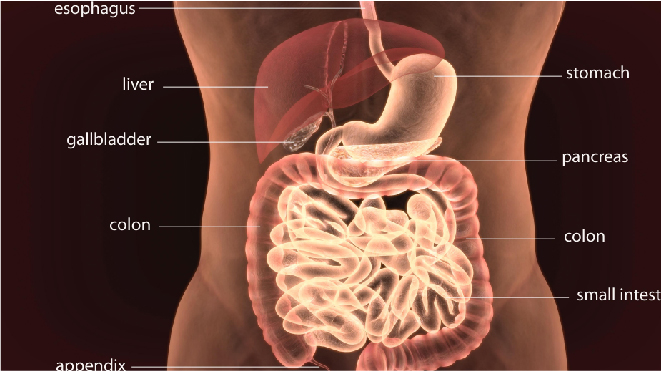Gallbladder cancer as the name suggests, begins in the gallbladder, an organ that stores a substance called bile. To read about gallbladder and gallbladder cancer, click here
What is chemotherapy?
Chemotherapy is the usage of anticancer drugs to restrict the growth and division of the cancer cells. It is usually given in cycles, with each cycle being followed by a rest period for the patient to recover from the side effects. People with cancer are prescribed one or combination of more than one drug at a time.
How does chemotherapy work for gallbladder cancer?
The chemotherapeutic drugs travel through the bloodstream aiming at killing the malignant cells in the body. Chemotherapy for gallbladder cancer cannot show successful results along, it is often combined with other treatments to see significant results. Chemotherapy alone is used to minimize the risk of recurrent cancer.
When can chemotherapy be given?
Chemotherapy is often given in cycles and in combinations with other treatments also. Based on a few factors like stage and type of cancer, spreading of cancer, tolerance of the patient towards the drugs and overall health of the patient, chemotherapy is given:
- After surgery: Chemotherapy is often given as an adjuvant treatment for treating gallbladder cancer. This treatment is given after post surgical procedures to minimize the risk of recurrent cancer.
- Before Surgery : Sometimes before surgery to reduce the size of tumor for better surgical outcomes in locally advanced cases.
As a combination with other treatments: Chemotherapeutic drugs are given along with other treatments to eliminate cancer from the body. - Palliative therapy: Chemotherapeutic drugs are given as a palliative therapy to relieve the patients from symptoms and shrink the tumors
How chemotherapy is given?
Chemotherapy is given in cycles, depending on the drugs used, each cycle contains one or more treatment sessions followed by a rest period for the patient to recover and prepare themselves for the next cycle. Chemotherapy can be given in many ways:
Oral Chemotherapy:
These drugs have a protective coating which is breakable by the stomach and is absorbed by the organs.
Intravenous:
Most chemotherapeutic drugs are given intravenously, which makes it the most commonly deliverable method. Here, the medication is injected into the veins and sometimes into the larger muscle. This injection of the drug will help in its rapid circulation in the bloodstream.
- Cannula: A small, thin tube or cannula is inserted in the veins of the forearm which is fixed temporarily.
Portable infusion pump: These are small pressure pumps which are used to deliver the drug at a slower pace. - Port-a-cath: This is also known as an implantable port or a subcutaneous port. It is used for patients who require constant or frequent administration of chemotherapy. This system is used to eliminate the discomfort caused by other systems.
- Central lines (tunnelled catheters): These are placed through the skin in the middle of the chest. They are pushed through the subcutaneous tissue and inserted into the superior vena cava. The catheters have lumens or entrances that facilitate extraction of blood samples and giving the drugs simultaneously.
Types of chemotherapy for gallbladder cancer:
Depending on the diagnostic results, chemotherapeutic drugs are prescribed to the patient. Following the chemotherapeutic drugs used for treating gallbladder cancer.
Gemcitabine:
It is an antimetabolite drug used in treating gallbladder cancer. It is given intravenously into the blood. Gemcitabine cannot be taken orally.
Cisplatin:
Cisplatin is an anticancer drug which is given intravenously to eliminate the cancer or symptoms of cancer. This drug has to be given under strict monitoring of experienced and skilled doctors because it is an irritant and can cause inflammation or redness with pain. Before and after the drug is given, IV fluids are prescribed to the patients to ensure hydration to protect the kidney functioning.
5-fluorouracil:
It is one of the most common chemotherapeutic drugs used for treating gallbladder cancer. Fluorouracil if an antimetabolite drug which is infused in the body to treat the cancer.
Capecitabine:
This is a chemotherapeutic drug which is classified as an antimetabolite used to treat gallbladder cancer. It is taken orally and within 30 minutes after a meal.
Oxaliplatin:
Oxaliplatin is an anticancer drug used to treat gallbladder cancer in advanced stages. It is often given in combination with 5-fluorouracil. This drug is often infused in the vein.
Read more about the drugs used in chemotherapy here
Side effects of chemotherapy for gallbladder cancer:
Chemotherapy aims to destroy cancer cells, in this process healthy cells can be killed too and this is what leads to side effects of this treatment. Read about the side effects of chemotherapy for gallbladder cancer here
Dosage and survival rate for gallbladder cancer:
Each cycle is followed by a rest period for the patients to recover with the side effects. The dosage of each cycle depends on the type of drug used, for which cancer it is used, tolerance and overall health of the drug. Chemotherapeutic drugs alone cannot completely treat gallbladder cancer. This treatment when combined with other treatments like surgery, targeted therapy, immunotherapy and radiation therapy will help increase the survival rate of the cancer post chemotherapy.
The five year survival rate of cancer is the number of people out of 100, who have survived cancer for five years after treatment. The survival rate of gallbladder cancer is 19% because it is often diagnosed in the advanced stages.




